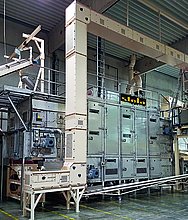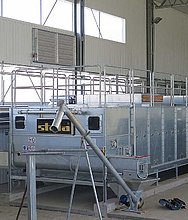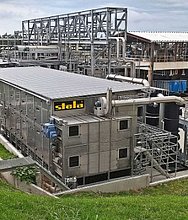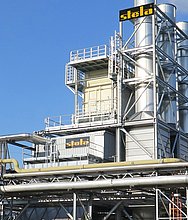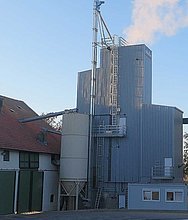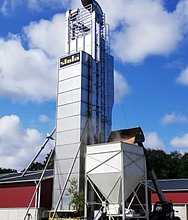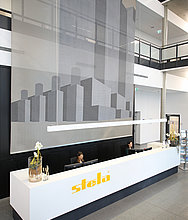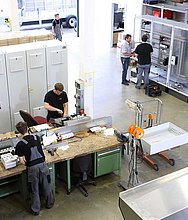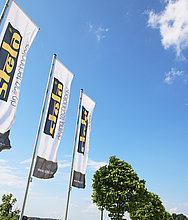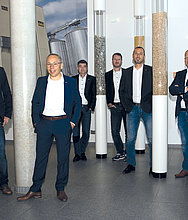In this interview, Yves Marc Schade of Stela Laxhuber GmbH spoke to World Cement about belt dryers and their role in contributing to sustainable cement production.
What is Stela’s background?
As a global leader in low-temperature belt drying, Stela Drying Technology is setting the standard for the future of industrial drying. With a century of experience and a specialised team of 250 dedicated experts, we deliver eco-friendly, efficient, and cost-effective drying solutions. In 1922, Stefan Laxhuber established Stela, starting as a modest workshop with aspirations of serving the agricultural machinery sector. Over the decades, Stela transformed. Guided initially by Stefan’s son and now propelled by the vision of the third generation, Thomas Laxhuber and Rainer Hettwer, the company pivoted to become a leader in drying technology. At Stela, we offer customised modern solutions in the field of fuel pre-drying. By drying a wide range of alternative fuels, such as refuse derived fuel (RDF) and solid shredded waste (SSW), the controllability and quality assurance in clinker production is optimised.
How can Stela help cement producers reduce their carbon footprint?
Low-temperature belt dryers can contribute to reducing carbon emissions in several ways, primarily by improving energy efficiency and minimising environmental impact.
Energy efficiency
Low-temperature belt dryers operate at lower temperatures compared to traditional drying methods. This results in lower energy consumption during the drying process. The reduced energy requirements contribute to overall energy efficiency and help decrease greenhouse gas (GHG) emissions associated with energy production.
Renewable energy integration
Dryers can be designed to integrate with renewable energy sources, such as biomass power or usage of waste energy stream as clinker cooling air. By utilising clean and sustainable energy, the overall carbon footprint can be further reduced.
Optimised drying processes
Low temperature drying allows for more precise control over the drying process. This optimisation can lead to shorter drying times and less energy consumption, contributing to resource efficiency and a maximised drying quality.
Waste heat recovery
Systems can be designed to capture and reuse waste heat generated at upstream processes, as clinker cooling air, improving energy efficiency.
In summary, low-temperature belt dryers offer the potential to reduce the carbon footprint by improving energy efficiency, integrating renewable energy sources, minimising emissions, optimising processes, recovering waste heat, conserving resources, and considering the entire life cycle of the drying system.
Can you tell us a bit more about Stela’s belt dryers?
A typical Stela low-temperature belt dryer’s key components include:
- A conveyor belt system specifically chosen for the client’s fuel mix – usually made of a durable, heat-resistant material.
- A modular drying chamber concept where the material is exposed to low-temperature air, ventilated from top-to-bottom, under slight pressure. The chamber is designed to allow for efficient heat transfer while maintaining the low temperatures required for the process.
- An air circulation system which makes sure to effectively and evenly distribute the low-temperature air throughout the drying chamber, followed by a uniform drying of the material.
The heat for the drying process in a low-temperature belt dryer can be supplied typically by an indirect or direct usage of excess heat from the clinker coolers. The key is that the temperatures are kept low, preventing material damage or loss.
Modern dryers are equipped with control systems that allow for precise adjustment of temperature, belt speed, and other parameters. This ensures optimal, fully automated drying conditions for different types of materials.
They also include sensors and monitoring devices to track temperature, humidity, and other relevant parameters.
Depending on the application, the mechanisms for loading and unloading materials onto and from the conveyor belt must be customised individually. This could include feeders, hoppers, rotary valves, or other material handling systems.
Any final thoughts for our readers?
Reducing cement plants’ carbon footprint involves implementing strategies and technologies that decrease GHG emissions caused by production. Cement manufacturing is known for its significant carbon dioxide emissions, primarily due to the chemical process of converting limestone into clinker and the high-temperature requirements in the kiln.
One of the primary strategies for reducing carbon emissions is the use of alternative fuels (AF) in place of fossil fuels. AF can include biomass, waste-derived fuels, and other non-fossil sources. By substituting a portion of the conventional fuel with AF, the overall carbon intensity of the combustion process can be reduced.
Additionally, waste heat recovery systems can help capture and utilise the excess heat generated during cement production. This recovered heat is then used for various purposes within the plant, such as preheating or cooling raw materials. This in turn improves energy efficiency and reduces the need for additional fossil fuel consumption.
Moreover, efficient kiln technologies significantly reduce energy consumption per ton of clinker produced.
Advanced kiln designs and control systems can optimise combustion, heat transfer, and overall process efficiency. Therefore, implementing process optimisation measures, such as better control of raw material composition, optimised kiln operation, and improved grinding technologies, also saves energy and reduces emissions.
Considering the entire supply chain is another important way to address the carbon footprint. This includes transportation and raw material extraction. Reducing emissions from these aspects, such as using alternative transportation fuels or optimising logistics, improves the process’ sustainability.
An additional method is carbon capture and storage (CCS) technologies. These capture CO2 emissions from the manufacturing process, store and use them. CCS can be applied to both the combustion of fossil fuels and the calcination process. While this technology is still developing, it has potential for substantial reduction in emissions, as well as the development and use of low-carbon cements. This involves substituting a portion of traditional clinker with supplementary cementitious materials like fly ash, slag, or pozzolans.
By adopting a combination of these strategies and continually investing in research and innovation, cement plants can work towards significant reductions in their carbon footprint, contributing to a more sustainable and environmentally friendly industry.
World Cement February 2024











